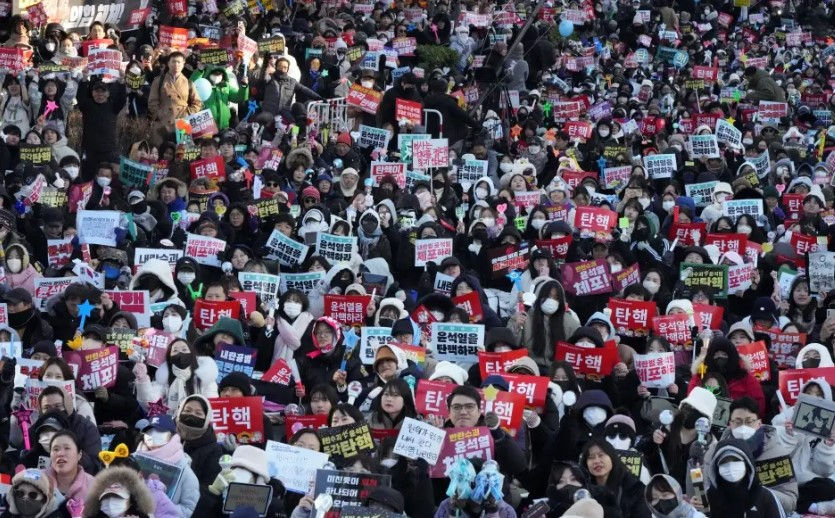Regional crisis, global balance: The DRC-Rwanda conflict, M23 and minerals
- Wonjeong Hong
- Mar 25
- 4 min read
Source
Article Summary
Political tensions between Democratic Republic of Congo, DRC, and Rwanda has a long history. The conflict started from the 1994 Rwandan genoice incident. After Tutsi-Led Rwandan Patriotic Front, RPF, and the Hulu militias and extremeits flew into DRC, Rwanda viewed the Hutu Groups in Rwanda and intervened them in 1996, and 1998, making east part of the DRC the place for March 23 Movement(M23) rebel group to constantly act at.
Although the M23’s official goal is to protect the Tutsi population, the group has been largely trying to take control of the strategic mining areas in East DRC and earn economic benefit. The fall of Goma shows that the Eastern part of DRC is de facto under the control of the M23.
DRC-Rwanda tension is a multi-actor conflict related to countries such as Kenya, Uganda, Burundi, South Africa, and Tanzania. The M23 group aims to earn the valuable minerals and resources from the east region of DRC through war economy, but the DRC government focuses on consodliating its domestic power and earning international support through this issue.
While some countries, such as, Uganda tends to shift its side based on its economic and political interests, most of the East African Countires (EAC) seems to be on the side of DRC. EAC contributes to resolving this conflict, and so does Southern African Development Community (SADC), although their influence is quite limited to due the logistics and military factors. The conflict is related to the emerge of the power vacuum in the eastern DRC and the possibility of regional war, deepening the risk of regional security and the war.
The conflict not only shapes the regional politics, but also has potential to shape the interests of global powers, such as the US and China. People expect US to strengthen its tie between Rwanda because of the economic reason, but US is also close to DRC government to China’s influence on its mining assets. What also adds the instability in the policy is the current geopolitical separation between US and Europe. Before the US election, it seemed that European countries and US would work together to limit China’s influence in the DRC. However, things have been uncertain since the Trump got back to the whitehouse, adding more uncertainty to the conflict and hindering Western countries to create a unified strategy to this tension.
War economy is behind this conflict, as after all, the M23 is aiming to gain control over the Eastern DRC because of the valuable natural resources such as gold, coltan, and other strategic minerals. The world’s leading technology companies are indirectly part of this system, as the supply chain of the minerals are significant for global giants to enhance technology such as smartphones, computers, batteries, and etc.
US and the European Union tried to increase the transparency in the supply chains and regulate the use of those rare earth elements by the legislation of Dodd-Frank Act. However, as the suppliers of the minerals in DRC can choose to smuggle them into the international market through Rwanda, the real effect of the policy remains weak.
DRC-Rwanda tension around the natural resources and protecting security is not only influencing the regional stability, but also the international power dynamics. To solve this problem, strengthening regional peace initiatives, and transparently controlling over the resources would be critical. The crisis serve as a case study to understand the dynamics of global economy and regional powers.
Reflection
Natural resources in a region, such as oil and minerals, are often regarded as a blessing from God. However, they can also be a curse that causes social and economic problems, such as an increase in the wealth gap, regional conflicts, and extreme resource dependency.
For example, Venezuela was one of the wealthiest countries in South America during the 1950s to 1980s. Its wealth was based on the discovery of oil called petroleum, and it took a significant portion of its exports and government revenue after the Oil Boom during the 1920s and 1970s. With the tremendous amount of money they earned from oil, Venezuela carried out large government projects and enormously bolstered social welfare and public initiatives.
The politicians and government just focused on populism and gaining support from the public by indiscriminately spending oil money rather than working on a strategic economic plan, such as making an effort to reduce resource dependency and invest in other industries. Venezuela was overly drunk by the taste of success.
As a result, Venezuela’s economy began to collapse due to the populist president, Nicholas Maduro, ’s disastrous economic policies and corruption. Maduro brought hyperinflation through heavy money printing. To make matters worse, the oil industry that was steadily supporting Venezuela’s economy shrieked and fell down due to the effect of the political state, as nearly half of the workers at PDVSA went on strike in late 2002, and half of them got fired.
The tension between the DRC and Rwanda is one of the cases that explains how natural resources bring about disasters. Unlike Venezuela, whose extreme oil dependency was the problem, The DRC-Rwanda conflict explains how the dispute over natural resources brings a serious military problem and regional stability.
The problems in the DRC and Rwanda also show how the international community is interconnected in regional issues, as the conflict is indirectly influenced by the current world technology supply chain and the lack of effective regulations.
Cases such as the DRC-Rwanda tension and Venezuela show Venezuela's problems and how the global economy is connected to them. Not to repeat these prior mistakes and conflicts, the countries must learn from the precedents and develop strategic economic planning and internationally try to contribute to solving the conflict over natural resources by strengthening the regulations of the supply chains, as the minor regional issue can cause the domino effect and ultimately be spread to the vast global conflict.




Comments